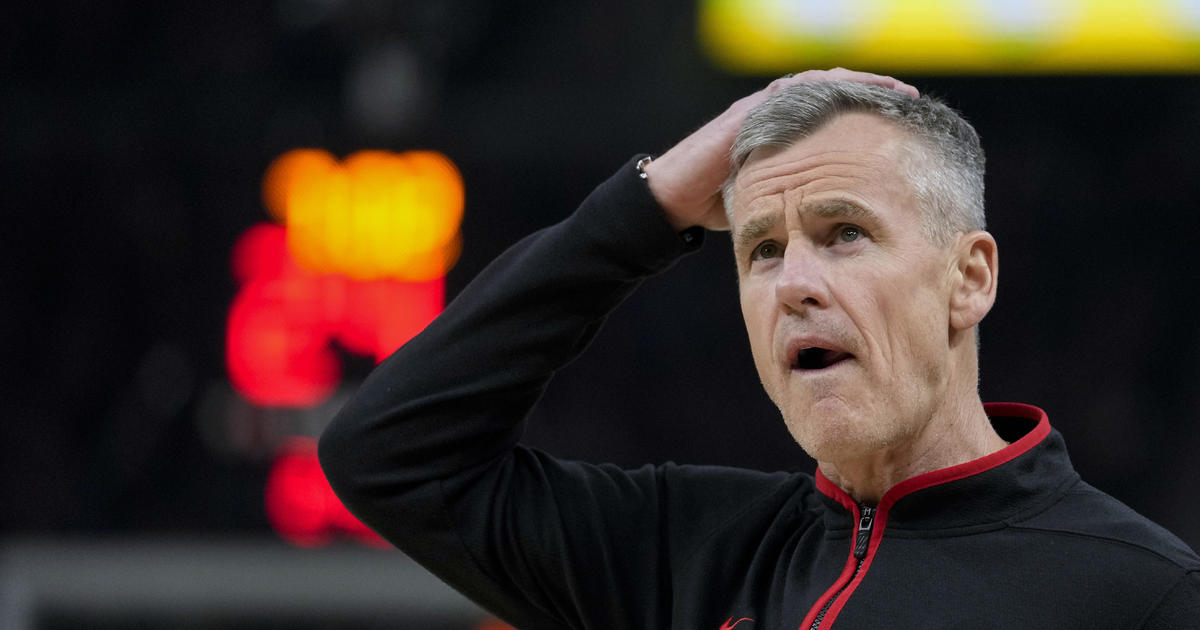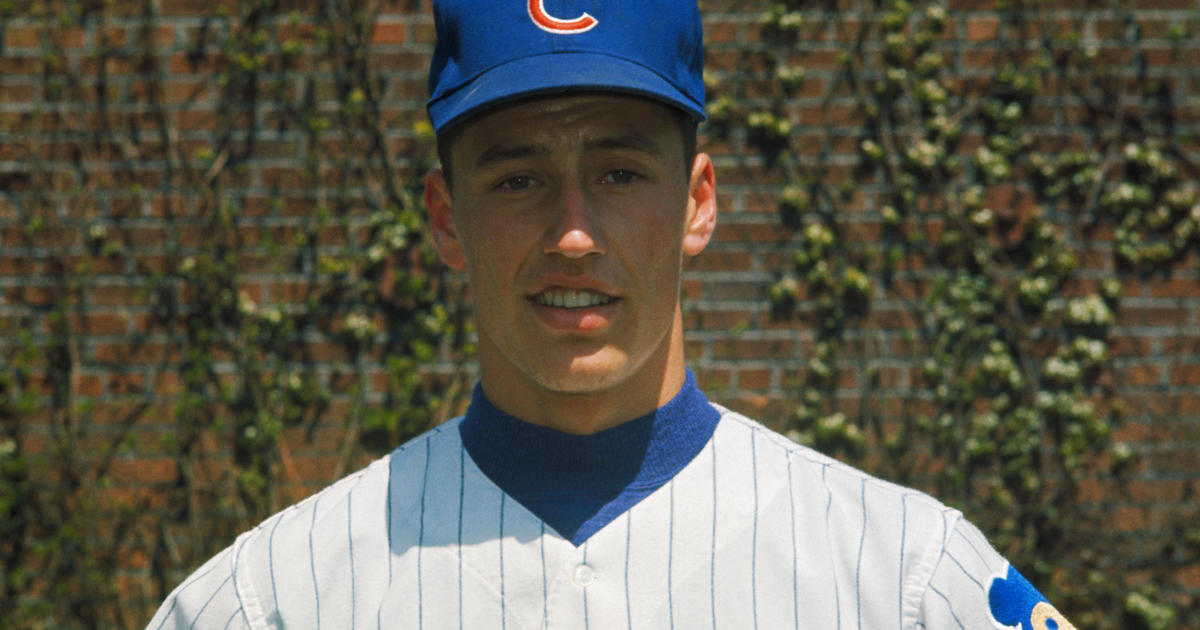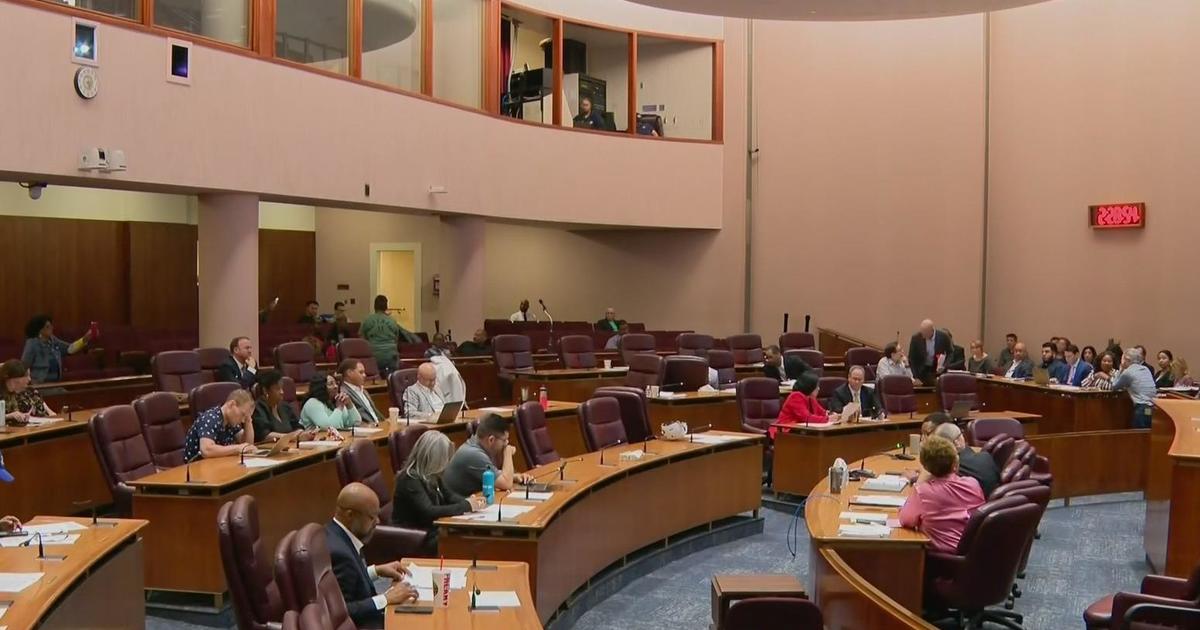Durkin's Bears Positional Breakdown -- Wide Receivers/Tight Ends
By Dan Durkin-
Editor's note: This is the sixth part in a series that takes an all-encompassing look at the state of the Bears' roster. Click here to read breakdowns of the other positions.
(CBS) The Bears trio of Alshon Jeffery, Brandon Marshall and Martellus Bennett put up prolific numbers during the 2013 season. Their combined 3,475 yards and 24 touchdowns ranked second in the league, trailing only the Broncos' troika of Demaryius Thomas, Eric Decker and Julius Thomas, who gained 3,506 yards and broke the goal line 37 times.
Thus, heading into the 2014 season, the Bears were rightly optimistic about the potential potency of this group, and offseason moves were minimal at both positions.
Wide receivers Domenik Hixon, Josh Morgan and Micheal Spurlock were signed as veteran depth with special teams in mind. Tight end Matthew Mulligan was brought in to compete as a "Y" or in-line blocking tight end. None of these moves were intended to disrupt the balance the team had achieved within its receiving corps.
However, injuries can disrupt the balance of any position group, and the Bears' receiving corps was hit hard in 2014.
Hixon tore his ACL during an offseason organized team activity, but the bigger blow came when 2013 seventh-round draft pick Marquess Wilson suffered a broken clavicle in training camp.
From a developmental standpoint, Wilson was looked upon to step forward and secure the third receiver position in the Bears' preferred "11" personnel grouping. His injury exposed the lack of depth at the position, and street free agent and former Super Bowl MVP Santonio Holmes was signed three weeks before the start of the regular season to fill the third receiver and punt returner roles.
Holmes never got in sync with the offense. Frankly, coach Marc Trestman said the team wasn't designing plays for the third receiver position, despite the fact that the spot consistently saw single coverage as opposing secondaries dedicated extra attention to Marshall and Jeffery.
Unfortunately for the Bears, the injuries weren't limited to the offseason program, as both Marshall (ankle) and Jeffery (hamstring) were hurt in the season opener against the Bills. The Bears' receiving group made its name winning matchups with leverage and length, not with speed. The entire group was of a similar athletic profile, a virtual basketball team in cleats. So the leg injuries further slowed down a group that already lacked suddenness and a speed element.
Without a deep threat, foes routinely kept a top on the defense with two-deep shells in Cover-2 and Cover-4 looks, squeezing down on passing lanes and effectively erasing the vertical passing game. The Bears were rendered to a short-to-intermediate passing attack in which receivers were rarely hit in stride with their shoulders pointed toward the goal line.
Opposing defenses suffocated the pass, which was a major issue for the Bears, who threw the ball on 65 percent of their offensive snaps, the second-highest total in the league.
One of the biggest decisions looming for new general manager Ryan Pace, coach John Fox and offensive coordinator Adam Gase is what to do with Marshall, who will be 31 in March. Marshall has been a durable, productive player throughout his career who dictates coverage. However, he's accumulating lower-body injuries -- hip and ankle -- and there's no indicator light on players that lets decision-makers know when there's not much left in the tank.
Furthermore, Marshall's contract is structured such that $7.5 million of his base salary is fully guaranteed, provided he's on the roster as of March 12. The Bears could potentially save $3.95 million in cap space and $7.7 million in cash if he's let go prior to that date.
Pace, Fox and Gase came from franchises in which size receivers were complemented with speed receivers. The 2015 free agent wide receiver class is loaded with talent, and the draft presents several intriguing options in the first three rounds that could provide speed.
Jeffery is entering a contract year, so he's incentivized to perform. On a team with limited homegrown talent, Jeffery is a potential cornerstone, but he shouldn't be paid as an elite receiver. He's a weapon in the red zone adept at winning and high-pointing 50/50 balls, but his ceiling appears to be that of a No. 2 receiver, which shouldn't be viewed as a negative. Pay attention to the contracts doled out to the second-tier free agents in the upcoming class as a starting point for Jeffery's potential negotiations.
Bennett turned in a Pro Bowl season, leading all tight ends with 90 receptions, which was also a single-season Bears franchise record. Bennett is another red zone threat and a mismatch against safeties and linebackers. However, the Bears need to find a true second tight end who can function as both an in-line blocker and also serve as a receiving threat.
Reserve Dante Rosario was thrust into a different role due to the injury to Tony Fiammetta, functioning as both a lead back and a move tight end. However, he didn't distinguish himself in either role and is set to become a free agent.
The Bears' receiving core certainly has talent, but they need to consider a different mix of skills to diversify the attack moving forward.
Dan Durkin covers the Bears for CBSChicago.com and is a frequent contributor to 670 The Score. Follow him on Twitter at @djdurkin.




